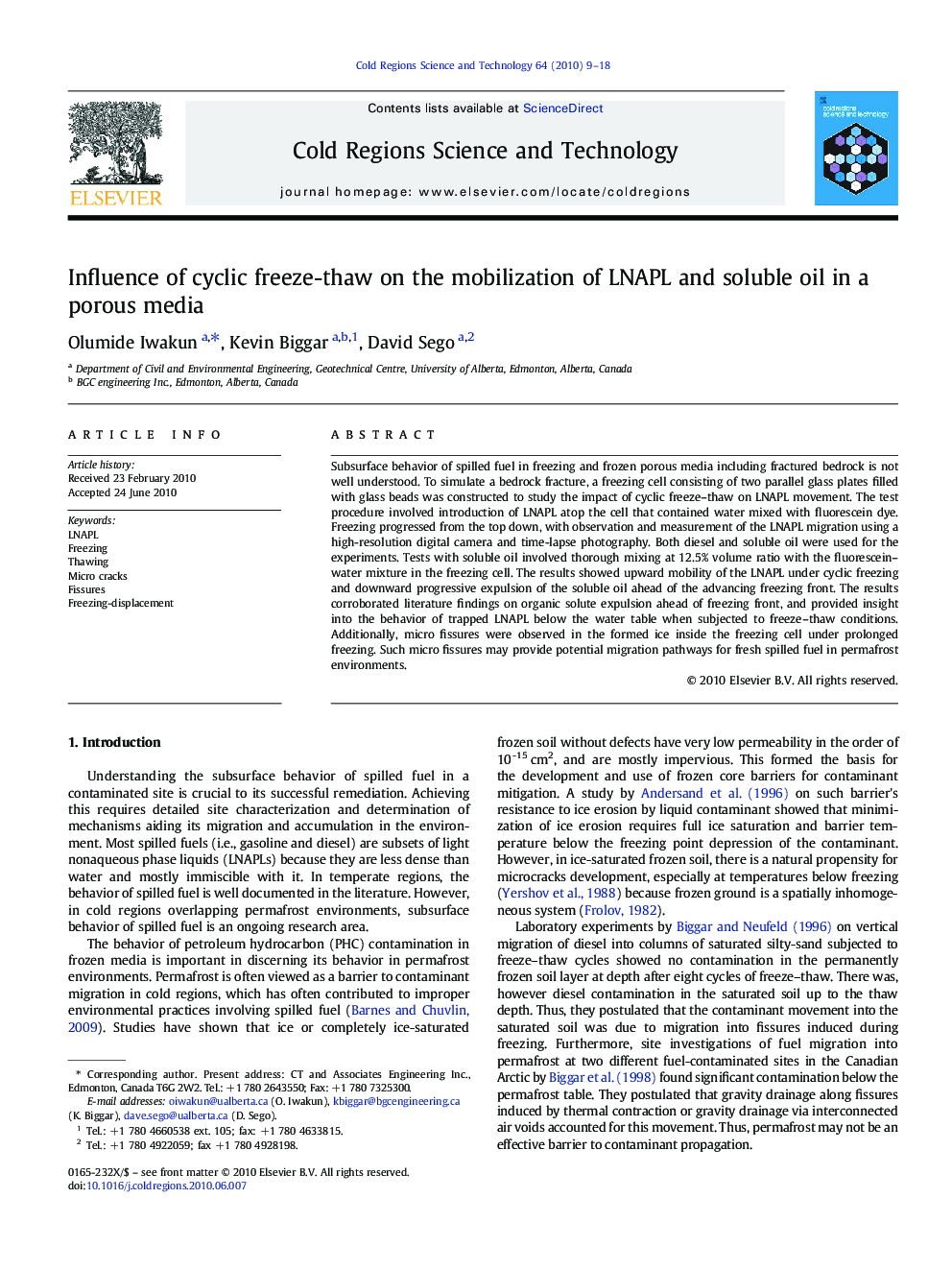| Article ID | Journal | Published Year | Pages | File Type |
|---|---|---|---|---|
| 4676299 | Cold Regions Science and Technology | 2010 | 10 Pages |
Subsurface behavior of spilled fuel in freezing and frozen porous media including fractured bedrock is not well understood. To simulate a bedrock fracture, a freezing cell consisting of two parallel glass plates filled with glass beads was constructed to study the impact of cyclic freeze–thaw on LNAPL movement. The test procedure involved introduction of LNAPL atop the cell that contained water mixed with fluorescein dye. Freezing progressed from the top down, with observation and measurement of the LNAPL migration using a high-resolution digital camera and time-lapse photography. Both diesel and soluble oil were used for the experiments. Tests with soluble oil involved thorough mixing at 12.5% volume ratio with the fluorescein–water mixture in the freezing cell. The results showed upward mobility of the LNAPL under cyclic freezing and downward progressive expulsion of the soluble oil ahead of the advancing freezing front. The results corroborated literature findings on organic solute expulsion ahead of freezing front, and provided insight into the behavior of trapped LNAPL below the water table when subjected to freeze–thaw conditions. Additionally, micro fissures were observed in the formed ice inside the freezing cell under prolonged freezing. Such micro fissures may provide potential migration pathways for fresh spilled fuel in permafrost environments.
